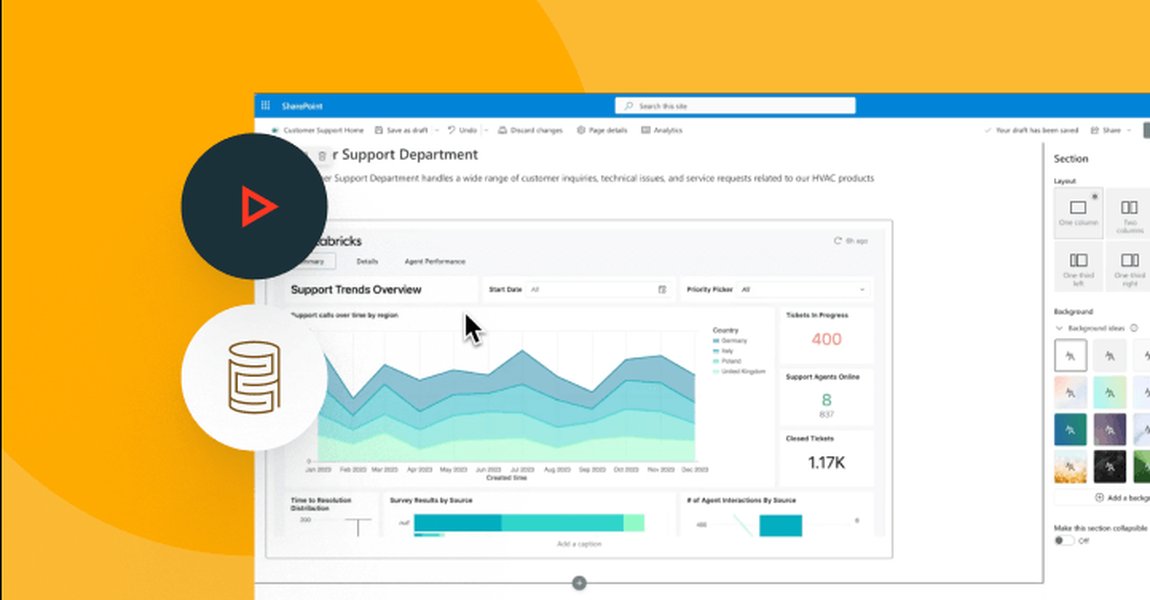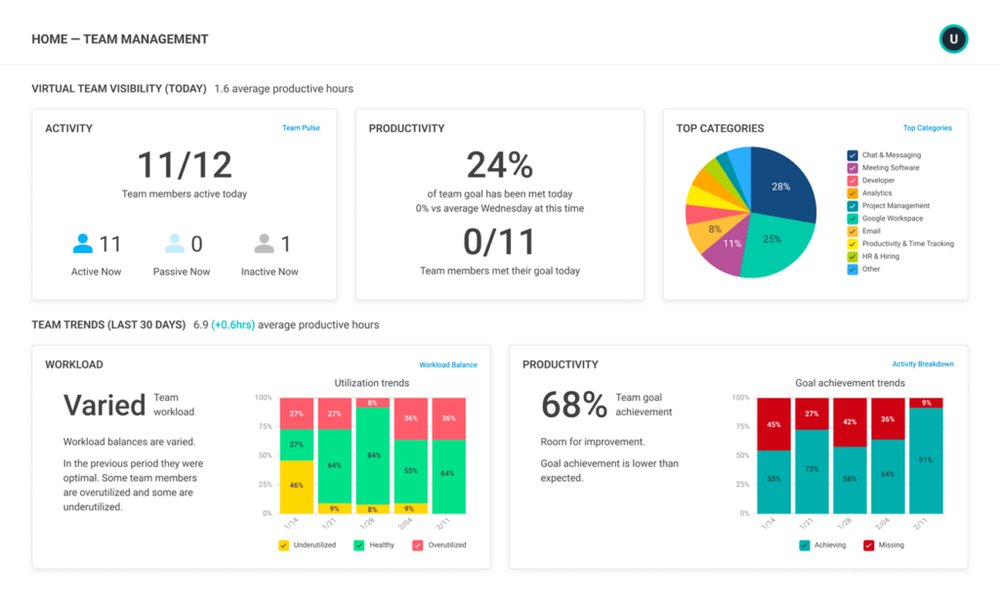
Unlocking AI's Potential: How to Precisely Measure Tool Usage in Your Company
Gain clear visibility into how AI is being adopted, utilized, and impacting your business operations as of 2025.
Essential Insights: Measuring AI Adoption
- Identify & Inventory: Systematically discover which AI tools (sanctioned and shadow IT) are being used across departments using automated discovery tools and employee surveys.
- Track Usage & Engagement: Monitor frequency, duration, task types, and user interaction patterns with AI tools through dedicated monitoring software and analytics platforms.
- Measure Impact & ROI: Connect AI usage data to tangible business outcomes, such as productivity gains, cost savings, operational efficiency improvements, and employee satisfaction.
Why Measure AI Tool Usage?
In today's rapidly evolving technological landscape (as of May 2025), Artificial Intelligence (AI) is no longer a futuristic concept but a present-day reality integrated into various business functions. Companies are increasingly adopting AI tools to enhance productivity, streamline workflows, improve customer experiences, and drive innovation. However, simply deploying these tools isn't enough. To maximize return on investment (ROI), ensure responsible usage, and strategically scale AI initiatives, organizations must effectively measure how these tools are being utilized. Measurement provides critical insights into adoption rates, user engagement, productivity impacts, potential risks, and overall business value.
Core Strategies for Measuring AI Tool Usage
A comprehensive approach to measuring AI usage combines technological monitoring with performance analysis and qualitative feedback. Here’s a breakdown of key strategies:
Step 1: Identifying and Cataloging AI Tools
Creating an Inventory
The first step is to know exactly which AI tools are present within the company ecosystem. This involves:
- Centralized Registry: Maintain an official library or registry of approved and deployed AI applications and platforms across different departments.
- Automated Discovery: Employ specialized software (like ActivTrak, mentioned in sources) that uses AI-powered auto-classification to detect AI tools and websites accessed by employees, often achieving high accuracy (over 90%). This helps identify both sanctioned tools and potential "shadow AI" usage.
- Employee Surveys & Self-Reporting: Supplement automated methods with regular surveys to capture insights into informally adopted tools or specific use cases that automated systems might miss.
Step 2: Tracking Usage Frequency, Duration, and Patterns
Monitoring Engagement
Understanding *how* and *how often* AI tools are used is crucial. This involves:
- Application Usage Monitoring: Utilize employee monitoring or productivity analysis software to log metrics like frequency of use, session duration, number of interactions, and time spent on specific AI tasks. This provides quantitative data on engagement levels.
- Pattern Analysis: Analyze usage trends over time (daily, weekly, monthly) to identify peak usage periods, departmental adoption variations, and how usage correlates with specific projects or business cycles.
- Adoption Rate Tracking: Measure the percentage of employees or specific teams actively using designated AI tools over time. This helps gauge the success of deployment and training initiatives.
Step 3: Analyzing Performance and Business Impact
Connecting Usage to Outcomes
The ultimate goal is to understand the value AI brings. This requires linking usage data to performance indicators:
- Productivity Metrics: Measure changes in task completion times, output volume, quality improvements, and error reduction rates for tasks where AI tools are employed. Establish baseline metrics before AI implementation for accurate comparison. Some reports indicate significant productivity gains (e.g., 20-30%) in certain sectors.
- Operational Efficiency: Track cost savings resulting from AI-driven automation of repetitive tasks (e.g., data entry, customer service responses) and process streamlining.
- Return on Investment (ROI): Calculate the financial return generated by AI investments by comparing the costs (software licenses, implementation, training) against the quantified benefits (cost savings, revenue generation, efficiency gains).
- Task & Workflow Integration: Assess whether AI tools are seamlessly integrated into core business workflows or used in isolation. Deeper integration often correlates with higher impact.

AI-assisted dashboards can help visualize usage metrics and business impact.
Step 4: Gathering User Feedback and Assessing Satisfaction
Understanding the User Experience
Quantitative data tells only part of the story. Qualitative insights are essential:
- Employee Surveys: Regularly collect feedback from employees regarding their experience with AI tools – usability, perceived usefulness, challenges encountered, and suggestions for improvement.
- Satisfaction Scores: Measure employee satisfaction specifically related to AI tools and their impact on job roles and workload.
- Training Impact: Correlate participation in formal AI training programs with subsequent usage rates and proficiency levels. Effective training is often linked to higher adoption and satisfaction.

Effective employee training is crucial for successful AI adoption and usage.
Step 5: Monitoring Governance, Risk, and Compliance
Ensuring Responsible Use
Measuring usage also involves ensuring AI is used appropriately and safely:
- Compliance Checks: Monitor usage to ensure adherence to company policies, data privacy regulations (like GDPR), and ethical AI guidelines.
- Security Monitoring: Identify the use of unauthorized or potentially risky AI tools that could compromise data security or intellectual property. Set up alerts for policy violations.
- Sentiment Analysis (Internal): Some advanced platforms analyze anonymized internal communications (where permissible and ethical) to gauge collaboration patterns and identify potential issues arising from AI integration.
Key Metrics for Measuring AI Usage and Success
Tracking specific Key Performance Indicators (KPIs) provides a structured way to evaluate AI tool usage. Here are some essential metrics derived from best practices:
| Metric Category | Specific Metric | Description | Measurement Method/Tool |
|---|---|---|---|
| Adoption & Engagement | Active Users | Number/percentage of employees using specific AI tools within a given period (daily, weekly, monthly). | Monitoring Software Logs, Platform Analytics |
| Adoption & Engagement | Session Duration | Average time spent per user session within an AI tool. | Monitoring Software Logs, Platform Analytics |
| Adoption & Engagement | Usage Frequency | How often employees interact with AI tools. | Monitoring Software Logs |
| Adoption & Engagement | Retention Rate | Percentage of users who continue to use an AI tool over time after initial adoption. | Platform Analytics, User Cohort Analysis |
| Productivity & Efficiency | Task Completion Time | Reduction in time taken to complete specific tasks using AI vs. baseline. | Time Tracking Studies, Workflow Analysis |
| Productivity & Efficiency | Output Quality/Volume | Improvement in the quality or quantity of work produced with AI assistance. | Quality Assurance Checks, Output Analysis |
| Productivity & Efficiency | Error Rate Reduction | Decrease in errors for tasks performed with AI assistance. | Quality Control Data, Process Audits |
| Business Impact | Cost Savings | Quantifiable reduction in operational costs due to AI automation or efficiency. | Financial Analysis, Process Costing |
| Business Impact | ROI (Return on Investment) | Financial benefit derived from AI investment compared to its cost. | Financial Modeling, Benefit-Cost Analysis |
| Business Impact | Customer Satisfaction (CSAT) | Impact of AI (e.g., chatbots, personalization) on customer experience metrics. | Customer Surveys, Service Metrics (e.g., resolution time) |
| User Experience | User Satisfaction | Employee feedback on the usability and effectiveness of AI tools. | Surveys, Feedback Forms |
| Technical Performance (GenAI) | Model Accuracy/Relevance | For generative AI, the quality and appropriateness of the generated output. | User Ratings, Automated Testing, Benchmarking |
| Governance | Compliance Adherence | Rate of adherence to company policies and regulations regarding AI use. | Usage Audits, Monitoring Software Alerts |
Visualizing AI Usage Dimensions
A multi-dimensional view helps in understanding the balance between different aspects of AI measurement. The radar chart below illustrates hypothetical performance scores across key measurement dimensions for different company departments (e.g., Marketing, IT, Operations) adopting AI. This visualization can highlight strengths and areas needing improvement in how AI usage and impact are tracked and realized across the organization. For example, a department might excel in tracking 'Usage Frequency' but lag in demonstrating 'Productivity Impact' or ensuring 'Compliance Adherence'.
Mapping the AI Usage Measurement Process
Visualizing the entire process helps in understanding the interconnected components of measuring AI usage. The mindmap below outlines the key stages, from initial identification to evaluating the final impact and ensuring governance.
(Registry)"] id1b["Automated Detection
(Monitoring Software)"] id1c["Employee Surveys
(Self-Reporting)"] id1d["Identify Shadow AI"] id2["Tracking Mechanisms"] id2a["Usage Frequency & Duration
(Logs, Analytics)"] id2b["User Activity Monitoring"] id2c["Adoption Rate Tracking
(% Users Over Time)"] id2d["Task/Use Case Analysis"] id3["Key Metrics (KPIs)"] id3a["Engagement Metrics
(Active Users, Sessions)"] id3b["Productivity Metrics
(Time Saved, Output Gain)"] id3c["Efficiency Metrics
(Error Reduction, Cost Savings)"] id3d["Business Impact Metrics
(ROI, CSAT)"] id3e["User Feedback
(Satisfaction Scores)"] id4["Tools & Platforms"] id4a["Employee Monitoring Software
(e.g., ActivTrak)"] id4b["Analytics Dashboards
(BI Tools)"] id4c["AI Model Performance Trackers"] id4d["Survey Tools"] id5["Goals & Outcomes"] id5a["Optimize AI Investment (ROI)"] id5b["Enhance Productivity"] id5c["Improve Workflows"] id5d["Ensure Security & Compliance"] id5e["Inform Strategy & Scaling"] id6["Challenges & Considerations"] id6a["Employee Privacy"] id6b["User Trust & Transparency"] id6c["Data Accuracy & Bias"] id6d["Defining Relevant Metrics"] id6e["Ethical Use Monitoring"]
Leveraging Technology for Measurement
Specific technologies play a vital role in effectively measuring AI usage. Employee monitoring software, often enhanced with AI capabilities, can automatically identify and categorize AI tool usage across desktops and web applications. These tools provide detailed logs on application runtime, active usage time, and interaction patterns. Business Intelligence (BI) platforms and dedicated analytics dashboards are then used to aggregate this data, visualize trends, track KPIs, and generate reports for different stakeholders, enabling data-driven decisions about AI strategy and resource allocation.

Dashboards provide insights into team productivity and tool usage patterns.
Leveraging Video Insights: Measuring Business Value
Understanding how to quantify the business value derived from AI investments is a common challenge for enterprises. Measuring goes beyond simple usage tracking to assess tangible impacts on business goals. The following video discusses approaches for enterprises to measure the business value of Generative AI investments, addressing how to assess impact when requests for funding often outweigh available resources.
Ethical Considerations and Best Practices
While measuring AI usage is important, it must be done ethically and transparently. Concerns about employee privacy and potential misuse of monitoring data are valid. Best practices include:
- Transparency: Clearly communicate to employees what data is being collected, why it's being collected (e.g., to improve tools, assess productivity impact, ensure security), and how it will be used.
- Anonymization: Where possible, aggregate and anonymize usage data, especially when reporting trends, to protect individual privacy.
- Focus on Enablement: Frame monitoring as a way to support employees, identify training needs, and improve tools, rather than purely for surveillance or punitive measures. Excessive monitoring can negatively impact morale and productivity.
- Policy and Consent: Ensure monitoring practices comply with local labor laws and company policies, potentially obtaining explicit consent where required.
Frequently Asked Questions (FAQ)
Why is it important to measure AI tool usage?
What kind of tools can help measure AI usage?
How can we measure the productivity impact of AI?
What are the risks or challenges in measuring AI usage?
Recommended Reading
- What are the best KPIs for measuring AI ROI across different departments?
- How can companies implement ethical AI monitoring practices without compromising employee trust?
- Can you provide examples of companies that have successfully measured and scaled AI adoption?
- How does measuring usage differ for generative AI tools compared to traditional automation AI?
References
Last updated May 6, 2025